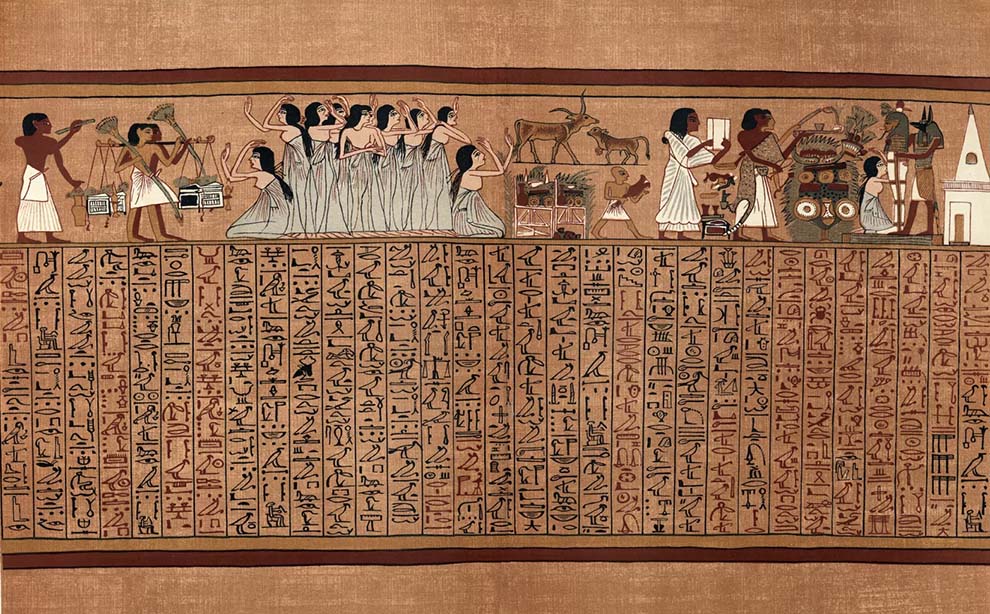Ancient Egypt, known for its remarkable contributions to civilization, also boasts a rich tradition of writing that reflects its culture, beliefs, and daily life. The various writing systems developed over centuries, including Hieratic and Demotic scripts alongside the magnificent hieroglyphs, served distinct purposes within the society. This blog post will explore the fonts used in ancient Egypt, detailing their appearance, significance, and the materials and tools utilized for writing. Understanding these scripts offers insights into the complexities of ancient communication and the profound impact of written language on Egyptian culture and administration. Join us as we delve into the world of ancient Egyptian writing and uncover the stories behind these fascinating scripts.
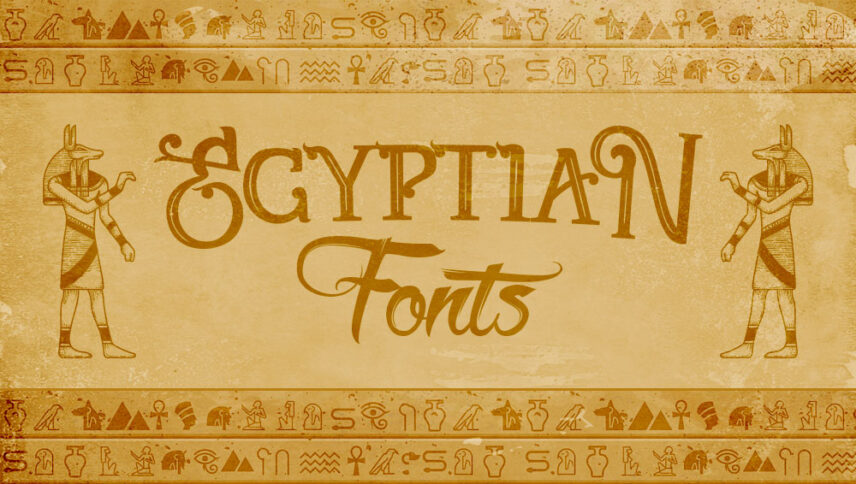
Introduction to Ancient Egyptian Writing
The realm of ancient Egypt, a civilization that flourished for millennia along the banks of the Nile River, is profoundly significant in the annals of human history, particularly when navigating the intricate frameworks of its written language, which served not only as a medium of communication but also as a crucial means of recording administrative and religious affairs that defined the life of the ancient Egyptians. The writing systems that emerged in this illustrious society, namely hieroglyphics, hieratic, and demotic scripts, each played distinct roles throughout various periods, adapting to meet the evolving needs of societal, bureaucratic, and cultural expression, thereby becoming not simply a tool for communication but a reflection of the civilization's intellectual depth and artistry, allowing generations to chronicle their beliefs, exploits, and day-to-day activities.
- Hieroglyphs: The most iconic script, comprising symbols and images that represented sounds and meanings, largely used for monumental inscriptions.
- Hieratic Script: A cursive form of hieroglyphs, which was utilized primarily by priests and scribes for administrative and literary texts.
- Demotic Script: A further simplification of writing that evolved over time, it was employed for daily writing during the later periods of ancient Egyptian civilization.
The relationship between the written word and the cultures and practices of ancient Egypt is tremendously intricate; for instance, hieroglyphs were often intricately carved into stone monuments, temples, and tombs, imbuing them with a sense of permanence and reverence that stood the test of time, serving both artistic and practical purposes. Moreover, the development of writing materials—such as papyrus, which allowed for easier transport and dissemination of written texts—enabled a wider reach for the written word, ensuring that knowledge, culture, and religious beliefs could be shared among a broader spectrum of society. As these writing systems evolved, they not only reflected the linguistic nuances of the ancient Egyptian language but also incorporated elements from adjacent cultures, showcasing the dynamic exchanges that occurred through trade and interaction with neighboring civilizations.
| Writing System | Time Period | Usage |
|---|---|---|
| Hieroglyphs | c. 3200 BCE - c. 400 CE | Monumental tombs, temples, religious texts |
| Hieratic | c. 3000 BCE - c. 400 CE | Administrative, literary, religious texts |
| Demotic | c. 650 BCE - c. 400 CE | Everyday documents, legal texts, letters |
Through the exploration of these writing systems, we can appreciate not just the aesthetic beauty of the characters and their representations but also the profound influence they had on the administration, culture, and dynamics of power in ancient Egypt, creating a legacy that would correspondingly influence later cultures and writing systems in the Mediterranean and beyond. In simple terms, the significance of written language in ancient Egyptian culture cannot be overstated, representing a vehicle for expression that encompassed everything from government decrees to intimate personal correspondence, highlighting the ways in which a complex society communicated and recorded its multifaceted existence. This remarkable legacy of ancient Egyptian writing continues to captivate scholars and enthusiasts alike, ensuring that the stories written in the sands of time endure long into the future.
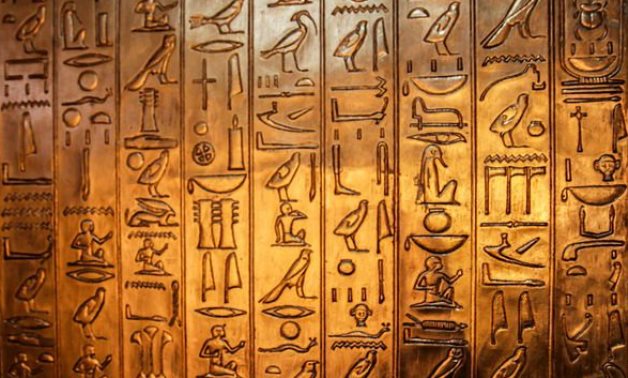
Hieratic Script: A Simplified Version
Hieratic script represents one of the essential writing systems that emerged in ancient Egypt, specifically serving as a simplified cursive form of the more complex hieroglyphic script, often used by priests and scribes for religious texts, administrative documents, and various other forms of writing, making it a crucial part of the ancient Egyptian literacy landscape. This writing system, which evolved around the same time as hieroglyphs, utilized symbols derived from the hieroglyphs themselves but arranged in a more fluid and efficient manner that enabled quicker writing and documentation, thus effectively supporting the daily administrative needs of ancient Egyptian society.
| Hieratic Character Type | Typical Usage |
|---|---|
| Religious Texts | Used extensively in temples and during religious ceremonies. |
| Administrative Documents | Employed for record-keeping and bureaucratic purposes. |
| Literature | Found in works of poetry and prose, showcasing thematic richness. |
The versatility of the hieratic script played an indispensable role in bridging the gap between the sacred and the secular, as it was particularly adept at adapting the complex ideas of religious beliefs for practical use in various contexts across ancient Egyptian civilization. Its emergence highlighted not just the innovation within the culture regarding the transmission of knowledge but also laid the foundation for the use of more straightforward writing systems in subsequent societies, making information more accessible to a broader audience that extended beyond the elite scribes and priests traditionally engaged with hieroglyphic inscriptions. In summary, the hieratic script can be viewed not just as a mere evolution of hieroglyphs but as a significant transitional phase that highlights ancient Egypt's dynamic approach to writing. Through its simplified structure and practical application, hieratic script exemplifies how early civilizations adapted their means of communication to best suit both the sacred and mundane aspects of life, thereby establishing a model of literacy that would influence future generations. To better grasp the impact of hieratic writing, one should consider the following points:
- It facilitated daily administration and record-keeping.
- It showcased the flexibility of the ancient Egyptian writing system.
- Its use in literature illustrated the cultural richness of ancient Egyptian civilization.
Demotic Script: The Everyday Script
In the rich tapestry of ancient Egypt, where monumental pyramids and grand temples often overshadow the subtler aspects of daily life, the Demotic script emerges as a fascinating artifact of everyday communication, serving as a bridge between the more formal hieroglyphs utilized in religious and royal contexts and the practical needs of the populace who inhabited this vibrant civilization; thus, understanding Demotic script not only sheds light on the evolution of written language in ancient Egypt but also reveals the intricacies of societal interactions, commerce, and personal relationships during a time when written words held immense power and significance. While hieroglyphs were predominantly reserved for monumental inscriptions, epitaphs, and sacred texts, Demotic script was employed for mundane record-keeping, personal correspondence, and legal documents, reflecting the dynamic needs of an ancient society that was both literate and sophisticated in its approach to communication. This script, which emerged around the 7th century BCE and flourished for several centuries, is characterized by its cursive form, enabling quick writing that was both practical for clerks and easily understood by everyday citizens who may not have been well-versed in the more ornate and complex hieroglyphic symbols.
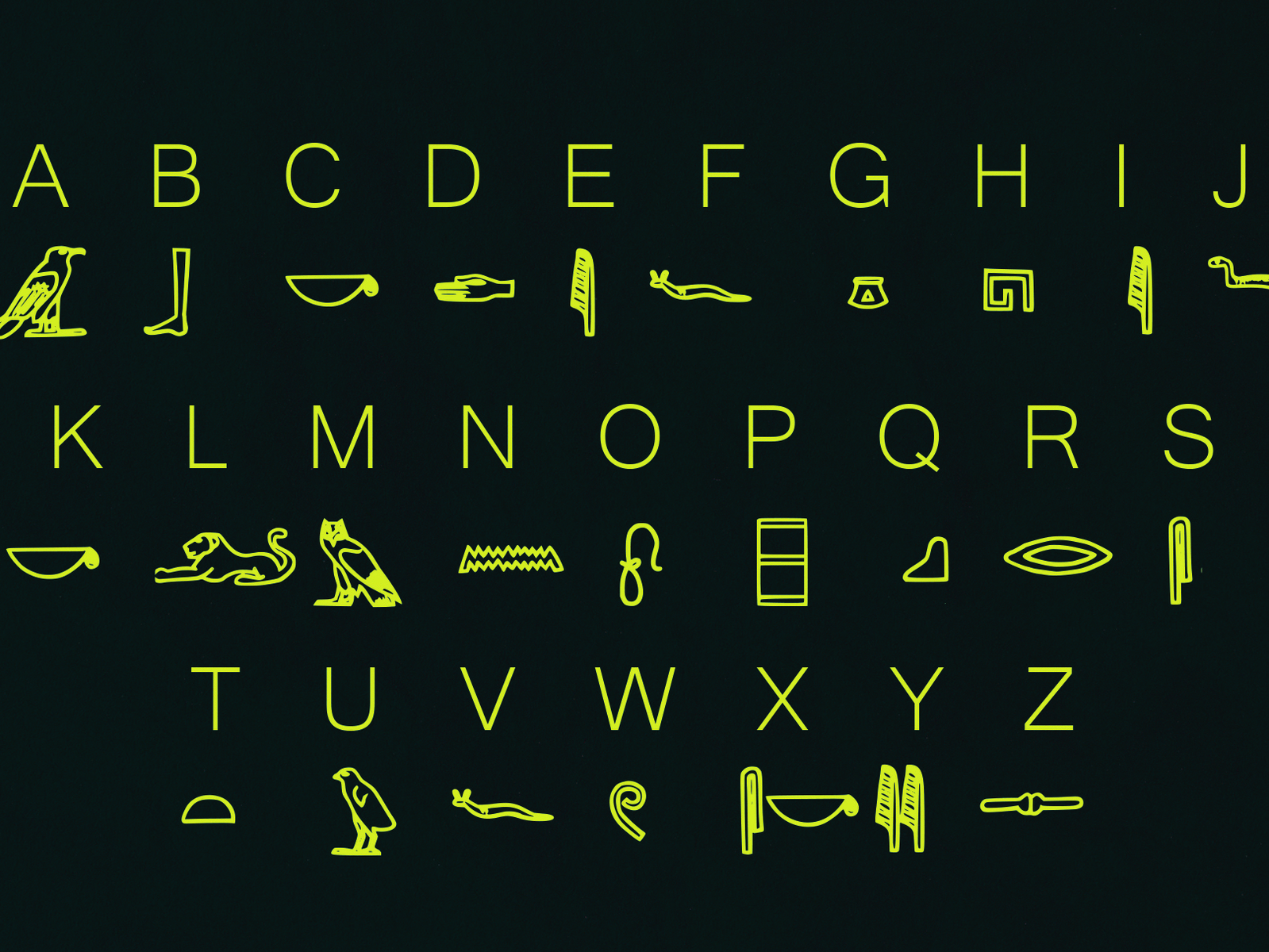
Characteristics of Demotic Script
Demotic script, derived from northern forms of hieratic writing, is distinguished by its flowing lines and rounded shapes, marking a significant departure from the rigid structure of earlier scripts; this evolution reflects a desire for efficiency and speed in inscribing texts on various materials, primarily papyrus, which was the most common writing surface of ancient Egypt. Comprised of a combination of phonetic characters and ideograms, Demotic script allowed for the representation of verbal sounds and abstract ideas, providing a versatile medium for communication that catered to the diverse needs of Egyptian society, ranging from administrative tasks to literary pursuits. As a language of the people, Demotic captured the essence of living and working in ancient Egypt, reflecting the daily activities, interactions, and social hierarchy that characterized this remarkable civilization.
Usage and Influence
Despite its practical applications, Demotic script did not exist in isolation; it coexisted alongside hieroglyphs and later, Coptic, influencing and being influenced by these other forms of writing in a complex interplay that highlights the fluidity of linguistic development in ancient Egypt. As trade expanded and cultural exchanges flourished throughout the Mediterranean and African landscapes, the significance of Demotic grew, becoming not just a script of the common people but also a critical tool for diplomatic correspondence and economic transactions, establishing a written framework that facilitated interactions across various cultures. To illustrate the scope of Demotic's usage, consider the following aspects of its prominence in ancient Egyptian society:
- Legal Documents: Contracts, agreements, and court records were often drafted in Demotic, allowing for clear communication of terms and facilitating the administration of justice.
- Literary Works: A variety of narratives and literary forms were penned in Demotic, contributing to the rich literary tradition of ancient Egypt.
- Religious Texts: Though religious scripts primarily relied on hieroglyphs, some devotional texts appeared in Demotic, making religious practices more accessible to the general populace.
Hieroglyphs: The Ancient Egyptian Pictorial Script
The fascination with ancient Egypt is largely attributed to its rich cultural heritage, which includes the development of a sophisticated writing system known as hieroglyphs, an intricate and multi-faceted combination of symbols that served as both a means of communication and a form of artistic expression, reflecting various aspects of the society including beliefs, practices, and daily life. Hieroglyphs, with their visually striking images, were not merely a practical tool for record-keeping but rather a symbolic language deeply entwined with religion, governance, and society, serving to immortalize the thoughts, achievements, and rituals of a civilization that has captivated historians and enthusiasts alike for centuries.
The Structure and Significance of Hieroglyphs
In understanding hieroglyphs, it becomes essential to recognize that this script is composed of logograms, which represent words or morphemes, and phonetic symbols, which denote sounds, thus providing a dual function that allows for both literal expression and phonetic transcription, making it a unique linguistic construct in the annals of human history. Each symbol possesses a specific meaning, and the arrangement of these symbols can alter the interpretation of the message, illustrating the complexity and richness involved in reading and writing hieroglyphs, which were often inscribed on temples, tombs, and monuments to convey religious and political narratives. Additionally, the evolution of these pictorial symbols into a writing system indicates the intellectual progress of ancient Egyptians, showcasing their ability to abstractly represent their world while preserving a connection to their mythological and spiritual beliefs.
The Artistic and Ritualistic Aspects of Hieroglyphs
Beyond their functional purposes, hieroglyphs also hold a significant artistic value, as the careful design and execution of each symbol demonstrate the skilled craftsmanship of ancient Egyptian scribes and artisans, whose work sought not only to convey messages but also to express beauty and reverence through their medium. The practice of using this script was closely linked to religious rituals, where the precise depiction of hieroglyphs was believed to have spiritual implications, serving as a conduit between the earthly realm and the divine, thus elevating the writing process to a sacred act. In conclusion, the hierarchical nature of the language itself, along with its interrelation with Egyptian art and spirituality, emphasizes the importance of hieroglyphs as not merely a writing system but as an integral component of ancient Egyptian identity and legacy.
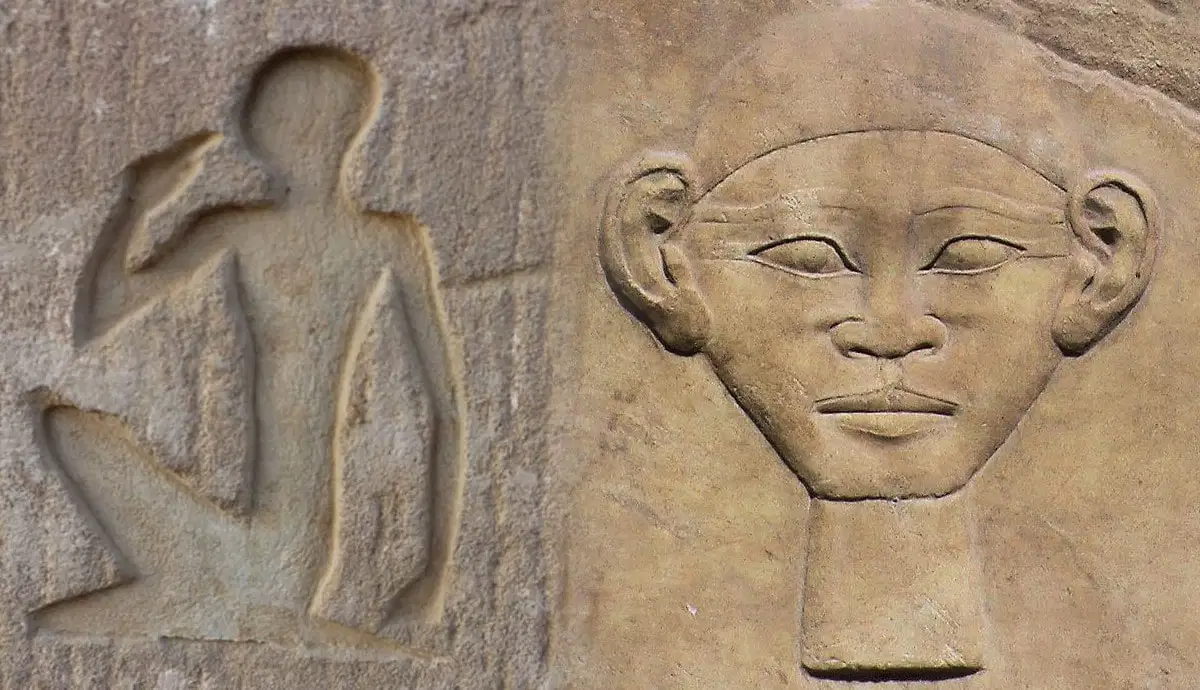
Materials Used for Writing in Ancient Egypt
In ancient Egypt, the process of writing was intricately tied to the materials that were available and suitable for the creation of records, communications, and artistic expressions, which in turn reflects the culture and technological advancements of the time. The Egyptians utilized a variety of materials, each chosen for its specific qualities and effectiveness in the writing process, which enabled them to document their history, religious beliefs, and daily activities. Notably, papyrus, a plant-based material made from the pith of the papyrus plant, became the primary writing surface in ancient Egyptian civilization, serving as an essential medium that allowed for both durability and portability of written documents. The use of papyrus, which was produced through a meticulous process of cutting, soaking, and pressing the plant fibers, provided ancient Egyptians with a reliable and lightweight writing surface that was both versatile and accessible. In addition to papyrus, the ancient Egyptians also employed other materials, such as stone, wood, and leather, for various purposes, including inscriptions, monumental texts, and administrative records. The versatility of these materials permitted the Egyptians to adapt their writing practices to fit the context and significance of the texts being produced, demonstrating their resourcefulness and innovation in communication. When discussing the materials used for writing in ancient Egypt, it is also crucial to consider the tools that complemented these surfaces, including styluses, ink, and brushes, which were crafted to create marks on these various writing mediums. Here are some of the prominent materials used for writing in ancient Egypt:
- Papiyrus: The most commonly used writing surface, essential for recording and preserving texts.
- Stone: Commonly used for inscriptions on temples, monuments, and tombs, ensuring permanence.
- Wood: Employed for official documents and figurative art, allowing for versatility in size and design.
- Leather: Used for personal documents and temporary notes that required flexibility and practicality.
The careful selection of writing materials by the ancient Egyptians not only illustrates their innovative spirit but also serves as a testament to the significance of written language in their culture; through these materials, they were able to capture and transmit their collective knowledge and beliefs across generations.
Tools and Techniques for Writing
In exploring the remarkable world of ancient Egypt, it becomes evident that the civilization possessed a variety of tools and techniques that facilitated their writing endeavors, which were crucial for documenting their remarkable history, religious beliefs, and administrative practices; these tools evolved over the centuries, reflecting changes in culture and technology while maintaining a connection to the past. The development of writing materials such as papyrus, a plant-based product that served as the primary medium for ancient Egyptian texts, significantly influenced the method of inscription and the overall accessibility of written communication, helping to communicate ideas across generations and geographical boundaries. Furthermore, the use of ink derived from natural sources, such as soot and minerals, allowed scribes to create vivid and enduring inscriptions, demonstrating the ancient Egyptians' dedication to preserving their language and lore. To understand the tools used in the writing process, one must consider the various instruments that scribes employed, including reed pens that were ingeniously crafted from local vegetation, which allowed for precision in creating the distinctive characters used in hieroglyphs and other scripts. In addition to writing tools, the techniques involved were equally refined; for instance, the meticulous method of carving or painting script onto various surfaces, such as stone, wood, and papyrus, ensured that written words could endure the passage of time, thus playing a pivotal role in the preservation of ancient Egyptian culture through its myriad texts, which often conveyed monumental achievements or conveyed the wishes of the gods. The importance of these tools and techniques is further exemplified by the fact that they were not merely functional but often artistic, with the beauty of the inscriptions reflecting the values and aesthetics of the civilization itself. The following table highlights some of the key tools and techniques employed by scribes in ancient Egypt, which showcases the intricate relationship between their writing methods and the broader cultural context in which they operated:
| Tool/Technique | Description |
|---|---|
| Reed Pens | Crafted from papyrus or other reeds for precision writing. |
| Ink | Composed of natural materials like soot or minerals for durability. |
| Papyrus | A versatile writing surface made from the papyrus plant. |
| Carving Tools | Used for inscribing text on harder surfaces like stone. |
| Brushes | Utilized for more artistic or decorative writing techniques. |
In conclusion, the exploration of tools and techniques used for writing in ancient Egypt reveals a sophisticated understanding of material culture and a deep appreciation for the written word that permeated every aspect of their civilization, showcasing not only their skills as scribes but also their commitment to the preservation of knowledge and tradition through the ages. The ability to convey thoughts, ideas, and decrees through their innovative writing practices not only reflects the complexity of ancient Egyptian society but also emphasizes the significance of written language, serving as a vital connection to their past that continues to intrigue and capture the imagination of modern scholars and enthusiasts alike. Ultimately, the legacy of ancient Egypt's tools and techniques for writing stands testament to a civilization that valued communication and record-keeping as essential elements in the tapestry of their existence, influencing those who came after them and leaving an indelible mark on the history of human ingenuity.

Evolution of Writing in Ancient Egypt
The evolution of writing in Ancient Egypt represents a remarkable journey that spans thousands of years, reflecting the cultural, religious, and administrative complexities of one of history's most fascinating civilizations. Initially, the writing system began with the simple yet profound use of pictographs known as hieroglyphs, which served not only as a means of communication but also as a powerful medium for artistic expression, allowing the ancients to convey their religious beliefs, historical events, and everyday life through intricate images that would eventually evolve into a more complex system of writing. Over time, as the needs of Egyptian society grew more sophisticated, so too did their writing systems, leading to the development of various scripts that allowed for more efficient recording of language. One of the pivotal scripts that emerged from this evolution was Hieratic, a simplified version of hieroglyphs that enabled priests and scribes to write more quickly on papyrus, which was more practical for daily use and administrative purposes. This cursive script was predominantly used for religious texts, literature, and medical documents, reflecting the dual need for both formality in significant writings and simplicity in everyday transactions. Following Hieratic, Demotic script came into prominence, further demonstrating the adaptability of written language in Ancient Egypt; it was primarily utilized for administrative and commercial purposes, highlighting how the evolution of writing paralleled the increasingly complex social and economic structures of the time. The transition from Hieroglyphs to Hieratic and eventually to Demotic illustrates the dynamic nature of written communication in Ancient Egypt, showcasing an intriguing blend of art and practicality that catered to the various facets of life in this ancient society. As political and social changes occurred, the written language adapted to meet the evolving demands, leading to innovative solutions that maintained the clarity of communication while reflecting the aesthetic values of the culture. Today, the progression of these writing systems provides archaeologists and historians with valuable insights into not only the mechanisms of communication but also into the shared identity and collective memory of a civilization that thrived along the banks of the Nile. To encapsulate the historical journey of writing in Ancient Egypt, a brief outline can be presented as follows:
- Hieroglyphs: Originally used for monumental inscriptions and religious texts.
- Hieratic: Developed for practical use, allowing for faster writing on materials like papyrus.
- Demotic: A further simplified form used primarily for everyday transactions and administrative records.
In conclusion, the evolution of writing in Ancient Egypt not only highlights the ingenuity of its people but also serves as a testament to the enduring legacy of their culture, where the written word played an indispensable role in shaping their history, belief systems, and societal structures. Each script, unique in its form and function, contributes to our understanding of how the ancients communicated and recorded their thoughts, ensuring that their voices would echo through the corridors of time, even to our modern civilization. Thus, the study of these writing forms is not merely an examination of letters and words, but an exploration of the very essence of an ancient society that continues to captivate our imaginations today.
Significance of Written Language in Ancient Egyptian Culture
The written language in ancient Egypt was not merely a tool for communication; rather, it served as a crucial component of the civilization's identity, allowing individuals to record their thoughts, history, and religious beliefs in a manner that transcended the limitations of spoken language and time itself. By employing a sophisticated collection of scripts, including hieroglyphs, hieratic, and demotic, the ancient Egyptians were able to inscribe their monumental achievements, spiritual rites, and administrative functions onto various surfaces, thus preserving their cultural heritage for generations to come. One of the principal significance of written language in ancient Egypt lies in its power to facilitate the administration of one of the world's earliest and most complex societies, which relied heavily on a well-organized bureaucratic system. Through the meticulous documentation of tax records, land ownership, and legal agreements, ancient Egyptians were able to maintain order and facilitate trade, thereby ensuring the smooth functioning of their economy and the stability of their society. This ability to record transactions and transactions was essential for sustaining the vast resources of the pharaoh and the priestly class, exemplifying the critical role that written communication played in supporting the empire's infrastructure. In addition to administration, written language in ancient Egypt upheld the spiritual and theological beliefs of the civilization, providing a medium through which deities, rituals, and cosmic narratives could be articulated and preserved. Sacred texts, inscribed on temple walls and within tombs, were intended to guide the dead through the afterlife, ensuring their safe passage into the realm of the gods, while simultaneously reinforcing the beliefs and values that permeated every aspect of ancient Egyptian life. Thus, the significance of written language extends beyond mere documentation; it reflects deeper meanings, illustrating how the Egyptians sought to connect the earthly realm with the divine, and maintain their cultural and spiritual continuity. In summary, the written language of ancient Egypt played an indispensable role in shaping the civilization's multifaceted identity by serving as a powerful means of communication for administrative, economic, and spiritual purposes. Through a diverse array of scripts that encapsulated every facet of their existence, the ancient Egyptians left a legacy that continues to fascinate and educate contemporary societies about their complex culture and beliefs. As we continue to study these ancient texts, we gain invaluable insights into not only their practical applications but also the profound significance of written language as a foundational element of ancient Egyptian civilization.
- Facilitated administrative efficiency and economic stability.
- Preserved spiritual beliefs and connected worldly practices with the divine.
- Contributed to the cultural identity and continuity of ancient Egyptian society.
Frequently Asked Questions
What were the main types of writing systems used in ancient Egypt?
The main writing systems were hieroglyphics, hieratic, and demotic.
What is hieroglyphics?
Hieroglyphics is a formal writing system that used pictorial symbols to represent sounds and concepts.
What function did hieratic script serve in ancient Egypt?
Hieratic script was a cursive form of hieroglyphics used mainly for religious texts and administrative purposes.
What is demotic script, and when was it used?
Demotic script is a simplified and more abstract form of writing that emerged around the 7th century BCE and was used for everyday writing.
How did the styles of writing evolve over time in ancient Egypt?
Styles evolved from the complex and formal hieroglyphics to simpler scripts like hieratic and demotic for practicality in writing.
Were there fonts that represented specific social classes in ancient Egypt?
Yes, hieroglyphics were often associated with the elite and religious practices, while demotic was used by the general populace for everyday transactions.
What impact did ancient Egyptian writing have on future civilizations?
Ancient Egyptian writing influenced later scripts and systems, contributing to the development of alphabets and the documentation of history.


